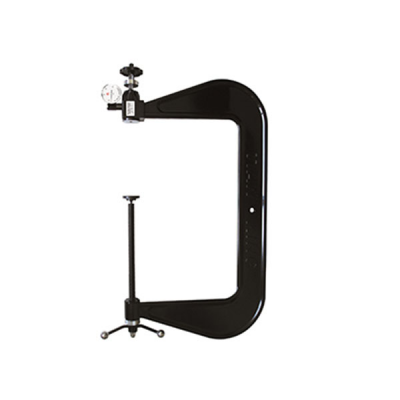Error and Treatment of Rockwell Hardness Tester Test
The structure of Rockwell hardness tester is simple with easy operation, but test hardness value may be inaccurate with long-term improper operation, which will make the product quality is greatly affected result in adverse consequences. Now the misunderstanding and handling of common situations of Rockwell hardness tester are as follows:
First, the impact of pressure:
(1) diamond indenter does not meet the technical requirements or it is wear after using a period of time, the operator can send it to measuring institution to test it he can not judge the quality of the diamond.
(2) The strength and hardness of carbide ball head is not enough, which is prone to deform. Carbide ball is flattened and deform into oval permanently. When short axis is vertical to parts surface, the indentation is shallow with high value; when long axis is vertical to parts surface, the indentation deepened with lower indicating value.
Second, the placement of the hardness is not correct.
The hardness test value is low if the hardness tester is not in the horizontal position. Measure the level with a level meter and then pad the hardness meter.
Third, the surface of test parts contact badly with the table, or support point is not stable, which will produce slippage, rolling, tilt and so on.
It will not only make the results inaccurate, but also damage the instrument. Design the appropriate workbench according to the geometry of the part.

Fourth, the impact of the surrounding environment.
Factory production hardness tester may have loose structure result to unstable value because the surrounding environment suffered the impact of vibration. Rockwell hardness should be installed in the place without vibration or isolated from the location of the source.
Fifth, human error:
(1) The skill of operator is not mature, practical experience is poor. The staff should be familiar with the Rockwell hardness.
(2) Exert test force is too fast, holding time is short, and the load is too slow to maintain a long time. With low hardness, the operating test force should be flat to maintain a certain afterburner.
Sixth, factors of the measured parts:
(1)Different surface finish show different effects on Rockwell hardness test. The lower the surface finish, the higher hardness when testing the high hardness, on the contrary, the lower the hardness. A rough surface with knife marks cooling first and fastest. For very hard surface, the higher the hardness value, When the tempering material is tempered, the surface layer with knife marks change first. The anti-tempering ability is small, so the hardness value is low.
(2) If there are salty, sand and other objects on the surface of heat treatment parts, the parts will produce slip when the test force is exerted. If there is greasy, it can play the role of lubrication with indenter pressed, so as to reduce friction and increase pressure. These two factor low the hardness value. The hardness of oxide scale loose layer on parts is decreased, while the hardness of the oxide layer is increased. The parts that need to be tested must remove the scale and wipe clean without dirty.
(3) The hardness test error of slope, taper, spherical and cylindrical parts is larger than the plane. When the indenter is pressed into the surface of such parts, the pressure around is smaller than plane, then the indenter may deviate or slip. Therefore, the pressure is increased and hardness become lower. The smaller the radius of curvature, the greater the slope. The hardness also reduce significantly.